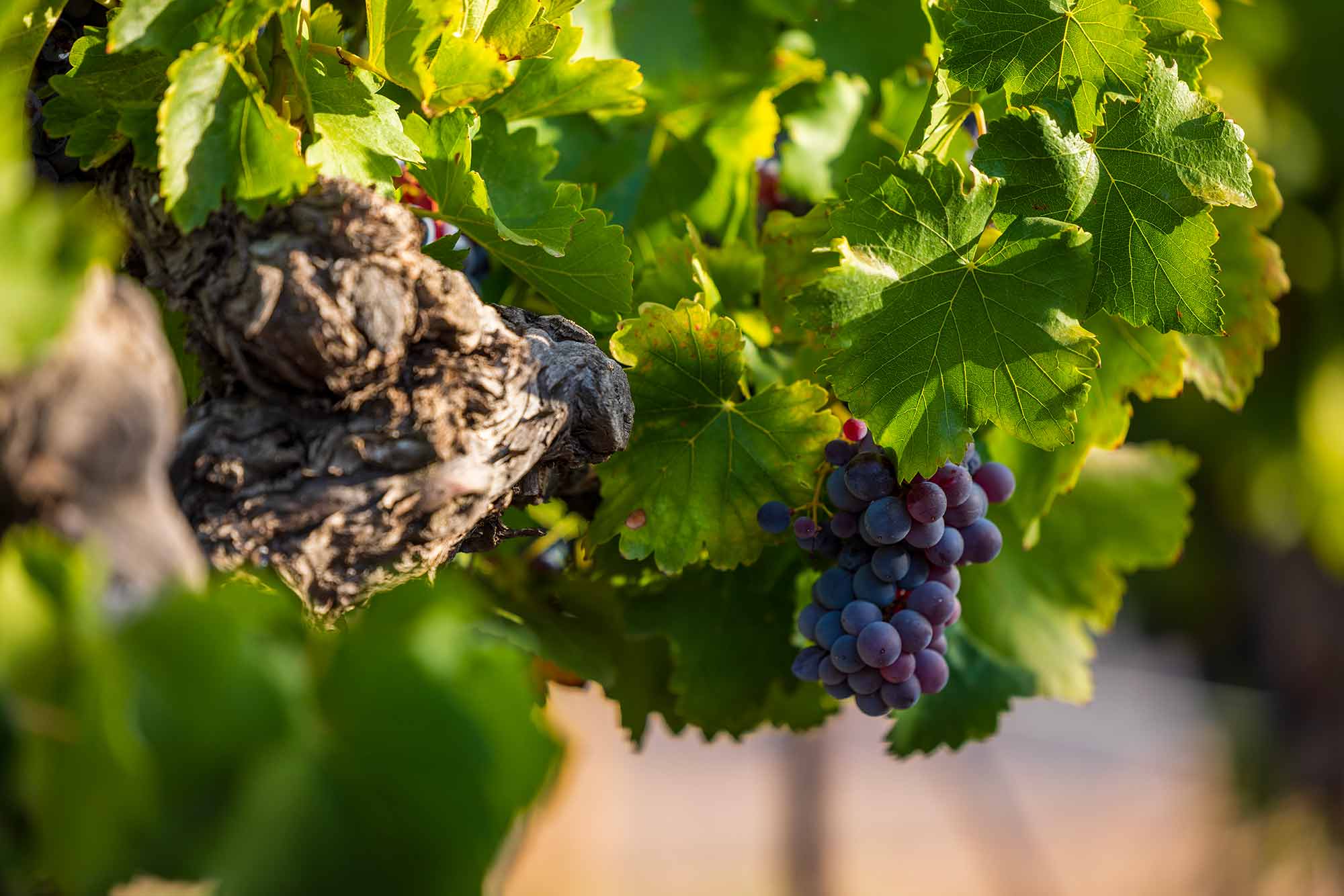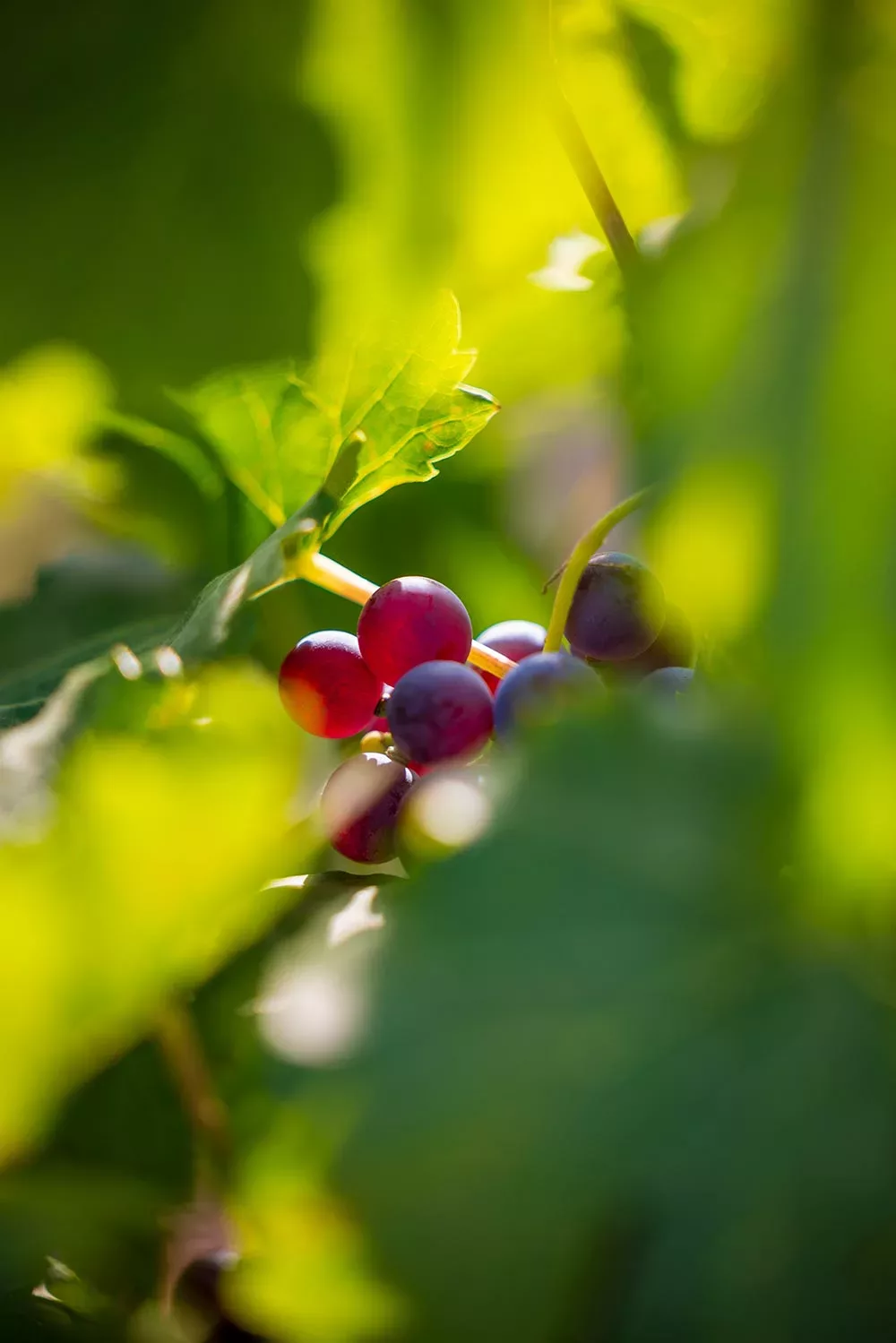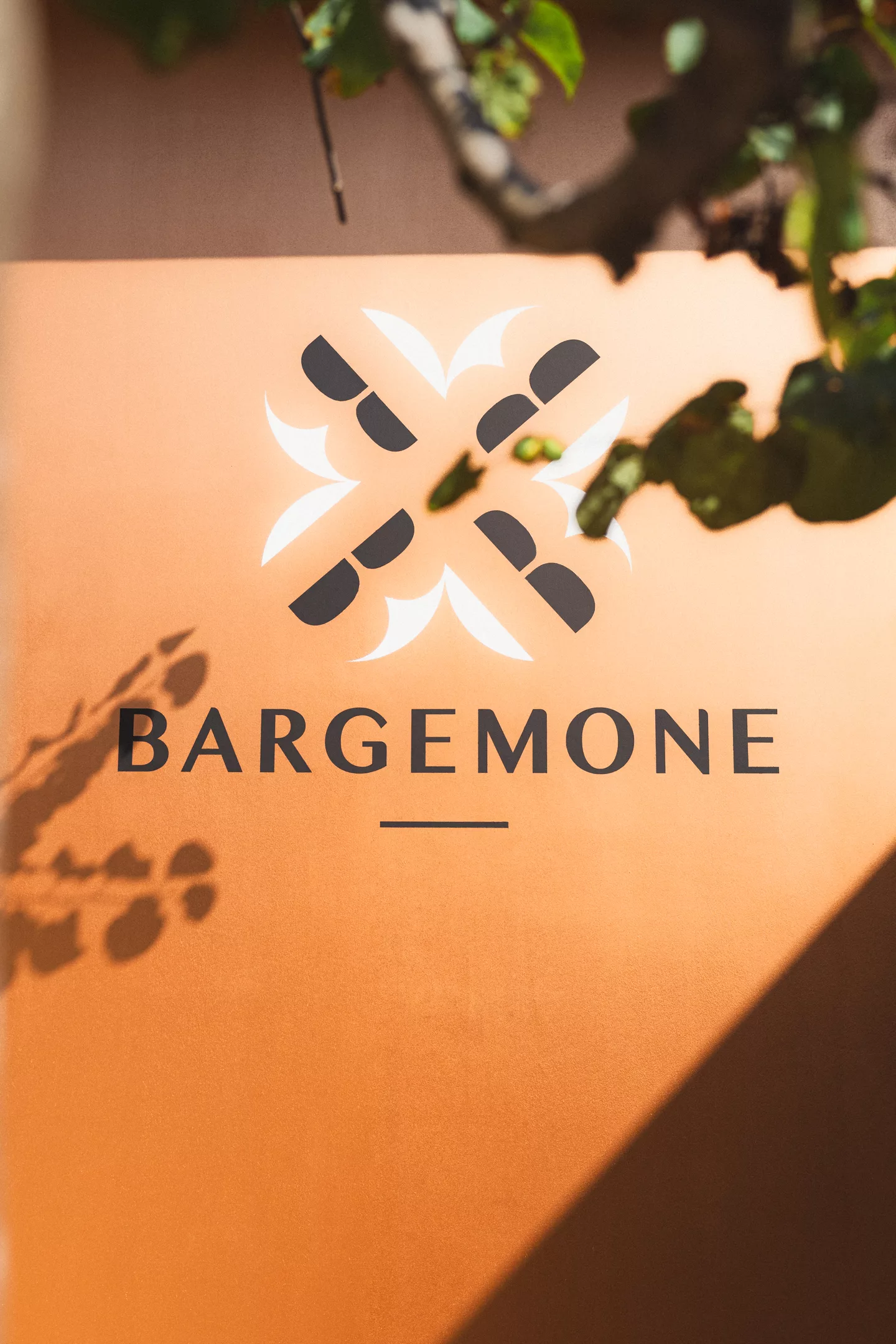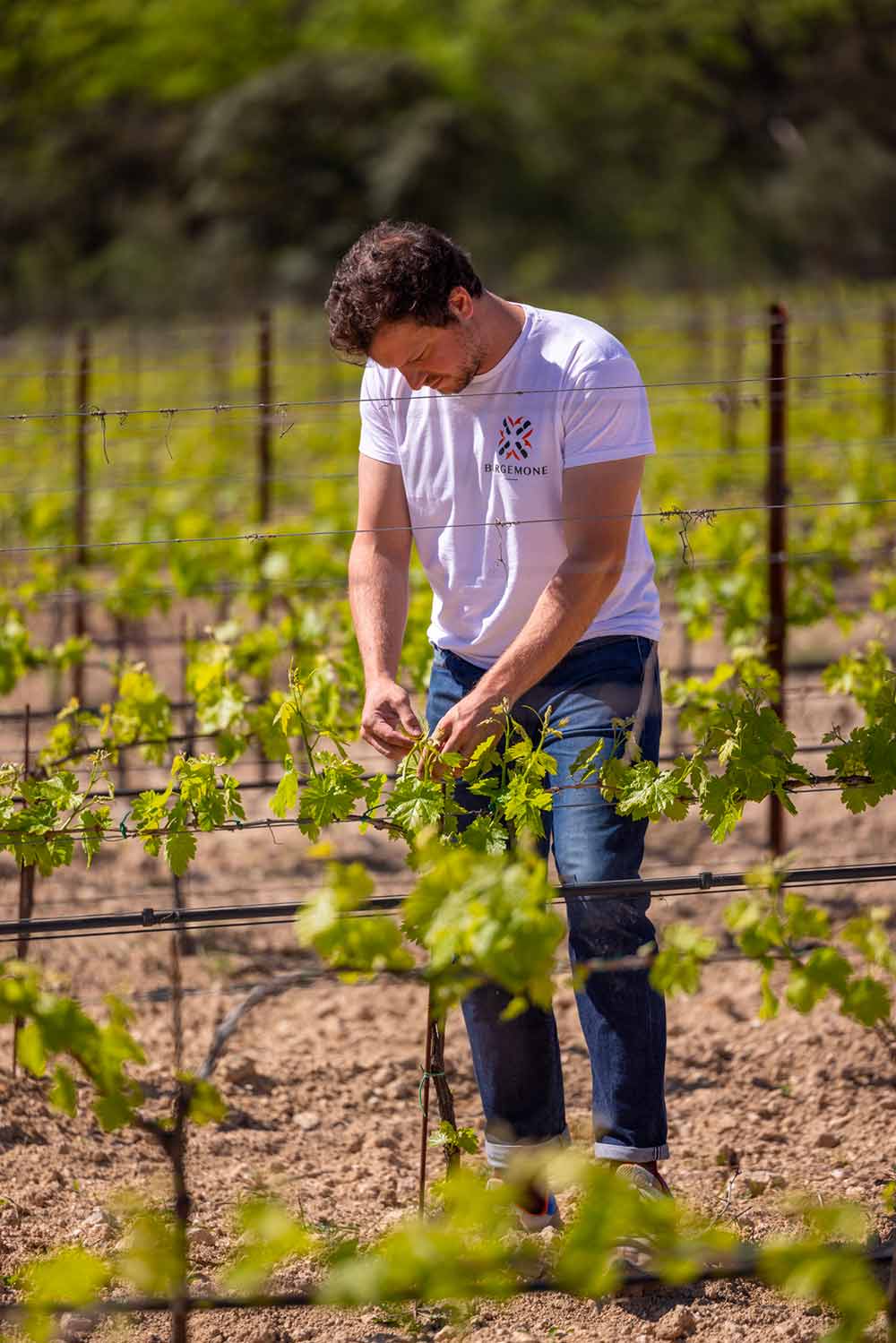The Estate
Located 15 minutes from Aix-en-Provence, in Saint-Cannat, Domaine Bargemone spans 120 hectares of vineyards surrounded by preserved flora, including flowery meadows and fields that host diverse wildlife. Within this ecosystem, the vines thrive completely.
Grape varieties and terroirs
Our entire vineyard is driven under Organic Agriculture practices and holds the HVE 3 (High Environmental Value level 3) label. Our red grape varieties are: Syrah, Cabernet Sauvignon, Grenache Noir, Caladoc, Counoise. Our white grape varieties are: Rolle, Sauvignon Blanc, Clairette, Viognier.
We keep our vineyard in good shape by uprooting excessively aged plots and through regular replanting. The cultivation of vines can lead to soil fatigue, affecting their composition and microbial life. Therefore, we wait one or two years after uprooting a plot before replanting vines. This allows the soil to regenerate and start anew, serving the vine in a healthier manner.

Our terroir consists of various soil compositions typical of the Coteaux d’Aix-en-Provence appellation. In the Saint-Cannat area, the plots face south and have clay-limestone soil. In Puyricard, we find clay and silt. In Eguilles, our plots are much rockier, with altitudes reaching 500 meters.
Our soils are diverse and complementary, imparting different structures and flavors to our wines. They always exhibit fullness on the palate and a balanced profile with great finesse. Sharing our terroir is essential to us. Thus, the mouthfeel should be the expression of the soil on which the grapes grew.
In France, we embrace the art of blending, while our American and South African friends tend to focus on single varietals. Blending involves “assembling” wines from separately vinified plots. This enables us to present different profiles in the glass, with a constant pursuit of excellence.
Our two cellars
Between 2019 and 2023, we embarked on major renovations. A new state-of-the-art winemaking cellar was added to the existing barrel cellar. This new cellar is equipped with highly efficient winemaking tools, combining the precision of advanced technology with the possibility of oak barrel aging, in line with tradition. All the tanks are temperature-controlled, allowing us to lower the juice to very cold temperatures, which is ideal for rosés and whites. Grapes intended for red wines are macerated either in barrels or stainless-steel tanks.
For our “natural” red wine, we manually harvest and employ the “Beaujolais” vinification method, following the carbonic maceration technique.
Our aim is to capture the essence of our terroir in the glass. We treat each parcel separately, adapting our vinification to what the vineyards offer us.
We harvest at night to preserve the fruit at low temperatures and save energy when we need to keep the juice cold.
We avoid using sulfites during harvesting and pressing. We delay their use for as long as possible and limit them to the absolute necessary.
For our rosés and whites, depending on the parcels and their terroirs, we cold-soak our juices for a duration that we decide before initiating fermentation. This technique, known as “stabulation,” helps us extract aromatics, volume, and roundness. For our Collection range, our grapes undergo a phase of skin contact, either in the press or in stainless steel tanks. This involves allowing the destemmed grapes to macerate in the press or a closed tank for a determined period. The goal is to extract aromatics, structure, and mouthfeel length.

This year, for our “natural” red wine, we manually harvested and employed the “Beaujolais” vinification method, using the carbonic maceration technique. Whole grape clusters are gently placed into a tank. The weight of the grapes on top causes those at the bottom to release juice. This juice, in contact with the grape skins and yeasts, initiates spontaneous fermentation. Gradually, the tank becomes naturally saturated with carbon dioxide, leading to intracellular fermentation within the grapes, releasing their juice. This method is akin to infusion, allowing the freshness and fruitiness to shine.
For our Secrets range, we age our wines in oak barrels for a minimum of 12 months. This imparts a remarkable fullness on the palate, complexity, and great aging potential.
Our work in the cellar is dedicated to achieving balance in the glass.


Our cellar welcomes you
A wall of regional stones, a few descending steps: you’ve arrived in our wine cellar, and you are our guests.
A place of exception, bathed in light. Its beautiful terrace opening to the outside, its green rooftop with a legendary view of Montagne Sainte-Victoire, offer unforgettable experiences for visitors.
We love sharing with you our pleasure and passion for winemaking. To tell you about our range and our bottles, our winemaking project, all infused with the gentle Provençal warmth. Conviviality and sharing are pillars of Domaine Bargemone.
Our outdoor terrace, adorned with a stone staircase and forming Provençal-style terraces, invites you to settle down for a tasting with family or friends, while gazing at the vineyards. Whether you’re a regular or just passing by, any occasion is a good opportunity to taste our wines and engage in conversation.
Our reception hall allows us to organize cultural events, tasting sessions, and educational workshops centered around wine, all with the intention of sharing expertise.
Every summer, DJ concerts and live bands will be scheduled every Wednesday evening. We look forward to your visit!
We also have the capacity to host your private events, meetings, seminars, conferences. Feel free to contact us directly at +33 4 42 57 22 44.
The history and our team today
The history of the estate dates back to the 13th century, centered around a Templar commandery. This commandery held significant importance for the Knights Templar. A collection of buildings with functions of rest, prayer, and combat training. The knights cultivated the vineyards there, even in an organic manner at that time!
After the dissolution of the Order of the Templars, the property subsequently belonged to several noble families of Provence. Among them were the Count of Les Baux, and Thomassin Bargemon, who lent his name to the estate.
In 1968, Jean-Pierre Rozan replanted vineyards after they were decimated by the Phylloxera disease, initiating the vineyard as we know it today.
In September 2019, our family, the Einaudi family, acquired Bargemone with the intention of continuing the work of generations of winemakers who were part of the family’s history, remembered with fondness and pride.
Pierre Einaudi, grandson and great-grandson of winemakers, now leads the estate with the support of his parents and a team of passionate experts.
Together, they infuse the estate with a new momentum, constantly striving for excellence, and aspiring to transform Bargemone into a true ecosystem, extending beyond organic farming. Their aim is to embrace the essential ecological transition while delivering the joy of tasting and sharing exceptional wines of Provence.
Excellence, Sharing, Ecology.

To discover
-
Organic agriculture and biodiversity Organic farming The whole vineyard is certified Organic Agriculture (AB), High Environmental Value level […]
-
Sulfites and Natural Fertilization Sulfites Sulfites in wine are primarily used as antioxidants and antiseptics. We restrict the […]
-
Our wines A Bargemone, nous travaillons la vigne et faisons du vin avec une grande précision et beaucoup […]
-
Discover our news!